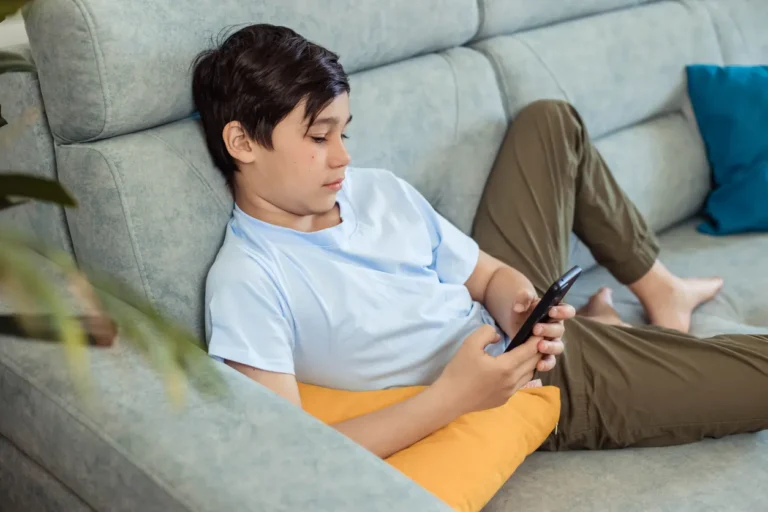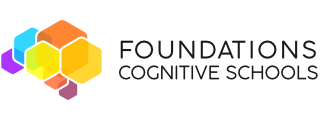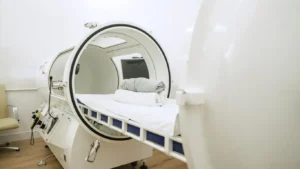
Story at-a-Glance
- Children with learning disabilities face increased risks from blue light exposure from digital screens and LED lighting.
- Blue light disrupts melatonin production, impairing sleep, impulse control, and prefrontal cortex function.
- Research links evening screen time to anxiety, depression, and disrupted eating patterns through hormonal changes affecting hunger and fullness.
- Sleep disruption from blue light impairs memory consolidation and cognitive function, creating additional academic challenges.
- Parents can help by creating screen-free evenings, using blue light filters, choosing warmer lighting, encouraging natural daylight exposure, and using blue light blocking glasses.
In today’s digital age, children are exposed to more blue light than ever before, whether from LED lights, smartphones, tablets, or television screens. For children with learning disabilities, this increased exposure can have particularly harmful effects on their mood, impulse control, eating habits, and overall academic performance. Blue light’s interference with natural sleep cycles and brain function can exacerbate challenges faced by these children, making it crucial for parents to understand how blue light exposure can affect their child and learn ways to
reduce it.
Understanding Blue Light and Its Sources
Blue light is a type of high-energy visible (HEV) light found naturally in sunlight and artificially in digital screens and LED lighting. During the day, exposure to blue light from natural sunlight helps regulate sleep-wake cycles, mood, and alertness. However, artificial sources of blue light, particularly from screens and LED lights, have become prevalent indoors, contributing to excessive exposure that disrupts biological processes.
Primary sources of artificial blue light include:
- LED lights: These are commonly found in homes, schools, and offices due to their energy efficiency. While practical, they emit higher levels of blue light compared to traditional incandescent bulbs.
- Screens: Smartphones, tablets, computers, and televisions are major sources of blue light, especially when used in the evening and at night.
For children with learning disabilities, who often rely heavily on technology for communication, education, and recreation, this exposure can significantly affect their health and well-being.
Blue Light and Impulse Control
Impulse control is a critical area of concern for children with learning disabilities, including those with ADHD or autism spectrum disorders. Blue light exposure, particularly in the evening, disrupts the production of melatonin, the hormone responsible for regulating sleep. This sleep disruption can directly impair a child’s executive functioning, which is closely linked to impulse control.
A study published in Nature demonstrated that sleep disturbances caused by blue light lead to impairments in the brain’s prefrontal cortex, which is responsible for decision-making, self- regulation, and impulse control . For children who already struggle with impulse management, the added challenge of blue light exposure can lead to increased behavioral issues, making it harder for them to stay focused, follow instructions, and manage their emotions.
Blue Light’s Effect on Mood
Mood regulation is another area where blue light exposure can have a negative impact, particularly for children with learning disabilities. Research has shown that excessive exposure to blue light, especially from screens before bedtime, is linked to increased risks of anxiety and depression. This is largely due to the disruption of circadian rhythms, the body’s internal clock that regulates mood and sleep cycles.
For children with learning disabilities, maintaining a stable mood is often challenging. The effects of disrupted sleep from blue light exposure can exacerbate mood swings, irritability, and feelings of frustration. A study published by the National Institutes of Health (NIH) found that children who had irregular sleep patterns due to blue light exposure were more likely to exhibit symptoms of anxiety and depression. For children who are already dealing with the complexities of learning disabilities, these mood disruptions can create additional obstacles in both their social interactions and academic progress.
Impact on Eating Patterns

Blue light exposure also affects eating patterns, which can be problematic for children with learning disabilities who may already have issues with food selectivity or sensory processing related to eating. The disruption of the sleep-wake cycle influences hormones that regulate hunger and satiety, such as ghrelin and leptin. A study from Obesity Reviews found that individuals exposed to blue light late in the day had elevated levels of ghrelin, the hunger hormone, and reduced levels of leptin, the hormone that signals fullness. This hormonal imbalance can lead to increased cravings for unhealthy foods, overeating, and weight gain.
For children with learning disabilities, these changes in eating patterns can worsen existing struggles with diet and nutrition. If a child’s sleep is disrupted due to blue light exposure, they may feel hungrier throughout the day or gravitate toward unhealthy snacks, further impacting their physical health and cognitive function.
Blue Light and Academic Performance
Academic performance is one of the most critical areas where blue light exposure can have a detrimental effect. Children with learning disabilities already face challenges in focus, memory, and processing speed, and the negative effects of blue light on sleep only add to these difficulties.
Sleep plays a vital role in memory consolidation and cognitive function. According to research published in Frontiers in Psychology, disrupted sleep from blue light exposure can impair a child’s ability to retain information, concentrate, and solve problems. This is particularly concerning for children with learning disabilities, who may already require more effort and support to achieve academic success.
When sleep is compromised, children often experience difficulties with attention and memory, making it harder for them to follow lessons, complete assignments, and engage in classroom activities. The lack of restful sleep can lead to a downward spiral where frustration from poor performance further decreases motivation and self esteem, impacting their overall academic trajectory.
How Parents Can Limit Blue Light Exposure
While it’s impossible to eliminate blue light entirely, parents can take proactive steps to minimize their child’s exposure and mitigate its negative effects. Here are some practical strategies:
1. Create a Screen-Free Evening Routine
Encourage your child to avoid screens at least 1-2 hours before bedtime. Instead of screen time, engage in relaxing activities like reading, drawing, or playing board games. This can help prepare the brain for sleep by allowing melatonin production to begin naturally.
2. Use Blue Light Filters and Screen Settings
Many devices now come with built-in blue light filters or “night modes” that reduce the amount of blue light emitted from screens. Ensure that these settings are activated, especially in the evening. You can also install apps like f.lux or use screen protectors that block blue light.
3. Replace LED Bulbs with Warmer Lighting
In rooms where your child spends a lot of time, consider using warmer-colored lights instead of LEDs. Incandescent bulbs or “soft white” LEDs emit less blue light and are gentler on the eyes, especially in the evening.
4. Encourage Natural Light Exposure
Ensure that your child gets plenty of exposure to natural daylight, especially in the morning. Natural light helps regulate circadian rhythms and supports healthy dopamine production, which is important for mood and attention regulation.
5. Wear Blue Light Blocking Glasses
If screen time is unavoidable, especially for schoolwork, consider having your child wear blue light blocking glasses. These glasses can significantly reduce the impact of blue light on the eyes and brain, especially during evening hours.
Conclusion
For children with learning disabilities, the negative effects of blue light on impulse control, mood, eating patterns, and academic performance can compound the challenges they already face. By understanding the sources and impact of blue light, parents can take steps to limit exposure and create an environment that supports their child’s overall well-being. Simple changes like adjusting screen time, using blue light filters, and encouraging natural light exposure can make a significant difference in helping children with learning disabilities thrive academically and emotionally.
Note: This blog post is intended for educational purposes only. While the information presented is based on scientific research, individual situations vary. Please consult with qualified professionals for proper assessment and individualized recommendations.



